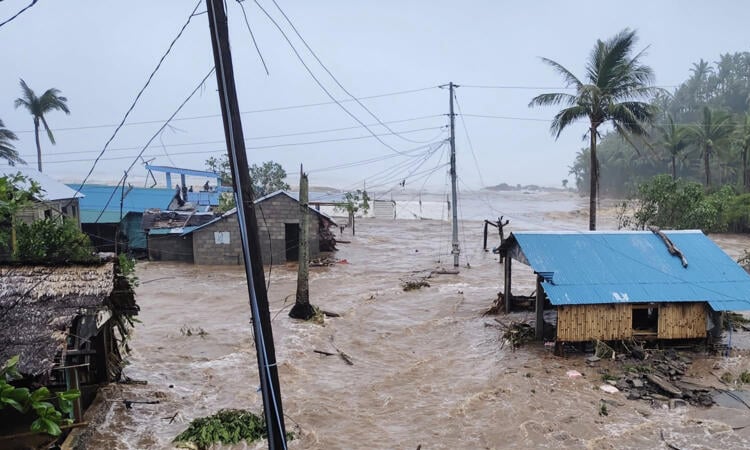News Flash
News Flash

MANILA, Nov 10, 2025 (BSS/AFP) - A weakening Typhoon Fung-wong departed the Philippines over the South China Sea on Monday morning, after its driving winds and heavy rain killed at least two people and forced more than a million to evacuate.
Fung-wong, with a footprint that spanned nearly the entirety of the archipelago, slammed into the country's eastern seaboard Sunday evening as a "super typhoon" after uprooting trees and swamping towns further south.
It landed just days after Typhoon Kalmaegi swept through the islands of the central Philippines, claiming at least 224 lives.
Schools and government offices across swathes of main island Luzon, including Manila, were closed Monday, though predicted heavy rains had yet to materalise.
In Aurora province, where Fung-wong made landfall the night before, rescue worker Geofry Parrocha said officials were only now able to assess the damage.
"We're seeing many damaged houses and some of our main roads were not passable due to landslides," he told AFP Monday morning from Dipaculao town, where power had yet to be restored.
"We couldn't mobilise last night because the rain was heavy and the volume of water was high."
Aurora Taay, mayor of the province's Dingalan town, told a Facebook Live audience that numerous houses and boats along the shoreline had been smashed amid massive waves.
- Turning towards Taiwan -
The state weather service said Monday that the typhoon, which saw 1.4 million people evacuated, was now expected to turn towards Taiwan as it continued to weaken.
On Sunday, Samar province, one of those hammered by Typhoon Kalmaegi last week, recorded the first known death from Fung-wong.
Rescuer Juniel Tagarino in Catbalogan City told AFP the body of a 64-year-old woman attempting to evacuate had been pulled out from under debris and fallen trees.
"The wind was so strong and the rain was heavy... According to her family members, she might have forgotten something and went back inside her house," Tagarino said.
The civil defence office later confirmed a second death, a person who drowned in a flash flood on Catanduanes island.
Further north, in Cagayan province, people sheltering in an evacuation centre told AFP that fear of flooding had convinced them to leave their homes.
"We often suffer flooding in our home, so when we were told to evacuate, we evacuated, because we would be trapped," said Loretta Salquina.
Scientists warn that storms are becoming more powerful due to human-driven climate change. Warmer oceans allow typhoons to strengthen rapidly, and a warmer atmosphere holds more moisture, meaning heavier rainfall.
- 'The ground was shaking' -
Catanduanes was lashed by heavy wind and rain early Sunday, with storm surges sending waves hurtling over streets and floodwaters inundating homes in some areas.
"The waves started roaring around 7:00 am. When the waves hit the seawall, it felt like the ground was shaking," Edson Casarino, 33, a resident of Catanduanes' Virac town, told AFP.
Video verified by AFP showed a church in the town surrounded by floodwaters that reached halfway up its entrance.
Major flooding was also reported in southern Luzon's Bicol region.
In Guinobatan, a town of about 80,000 in Bicol's Albay province, verified video showed streets transformed into raging torrents of water.
Only days earlier, Typhoon Kalmaegi sent floodwaters rushing through the towns and cities of Cebu and Negros islands, sweeping away cars, riverside shanties and massive shipping containers.
Search and rescue efforts in Cebu were suspended on Saturday due to safety concerns over the approaching super typhoon.